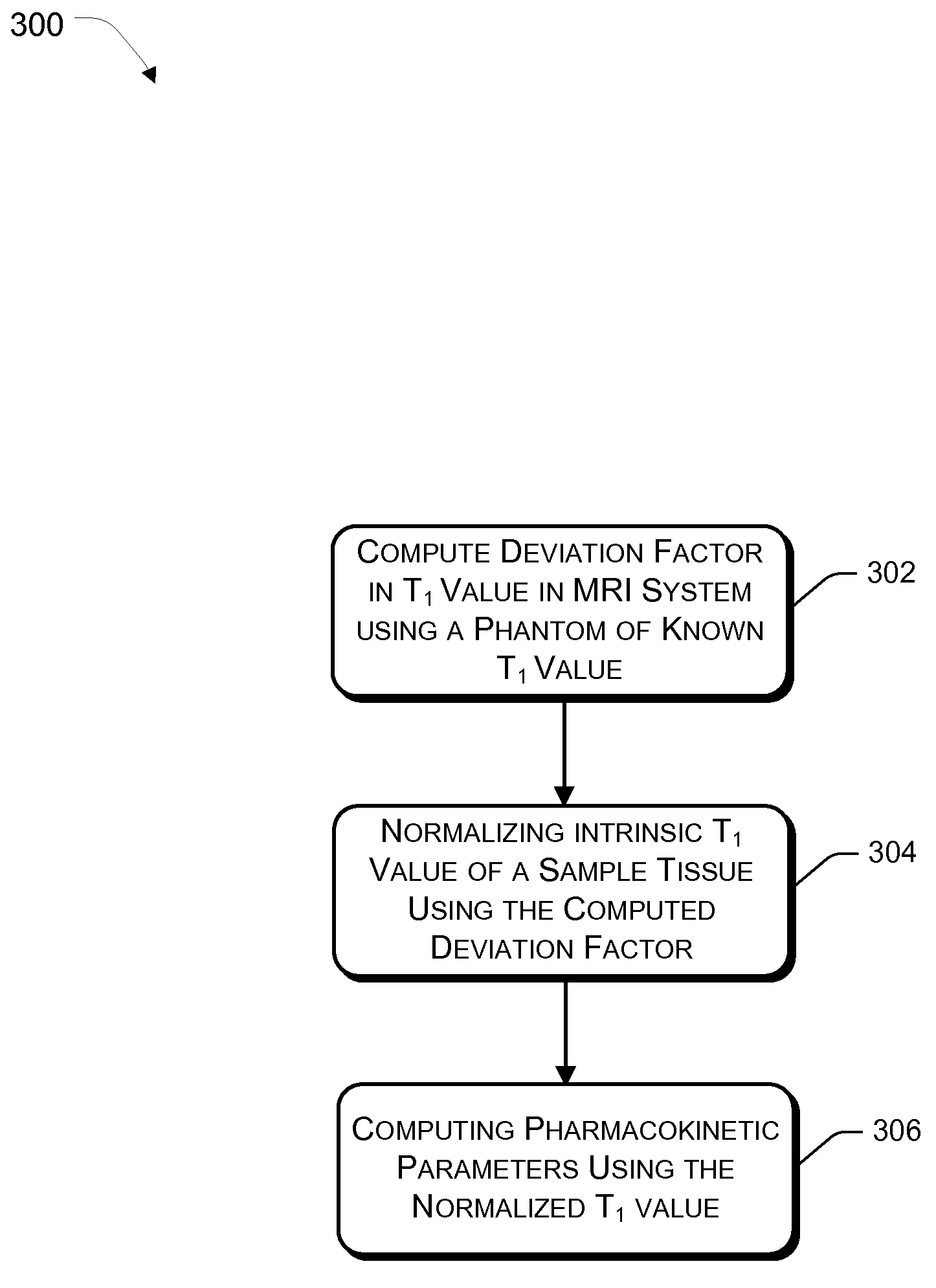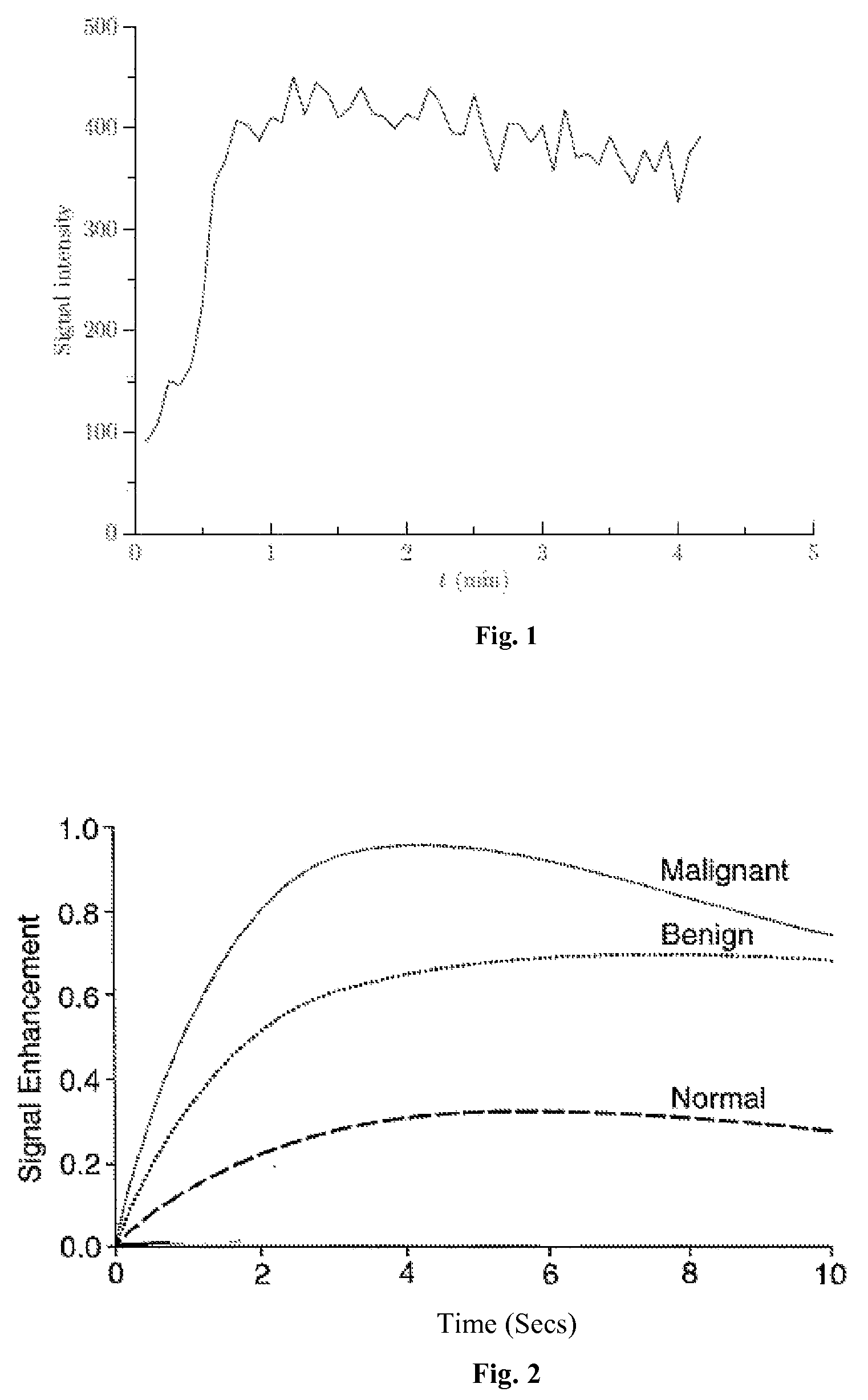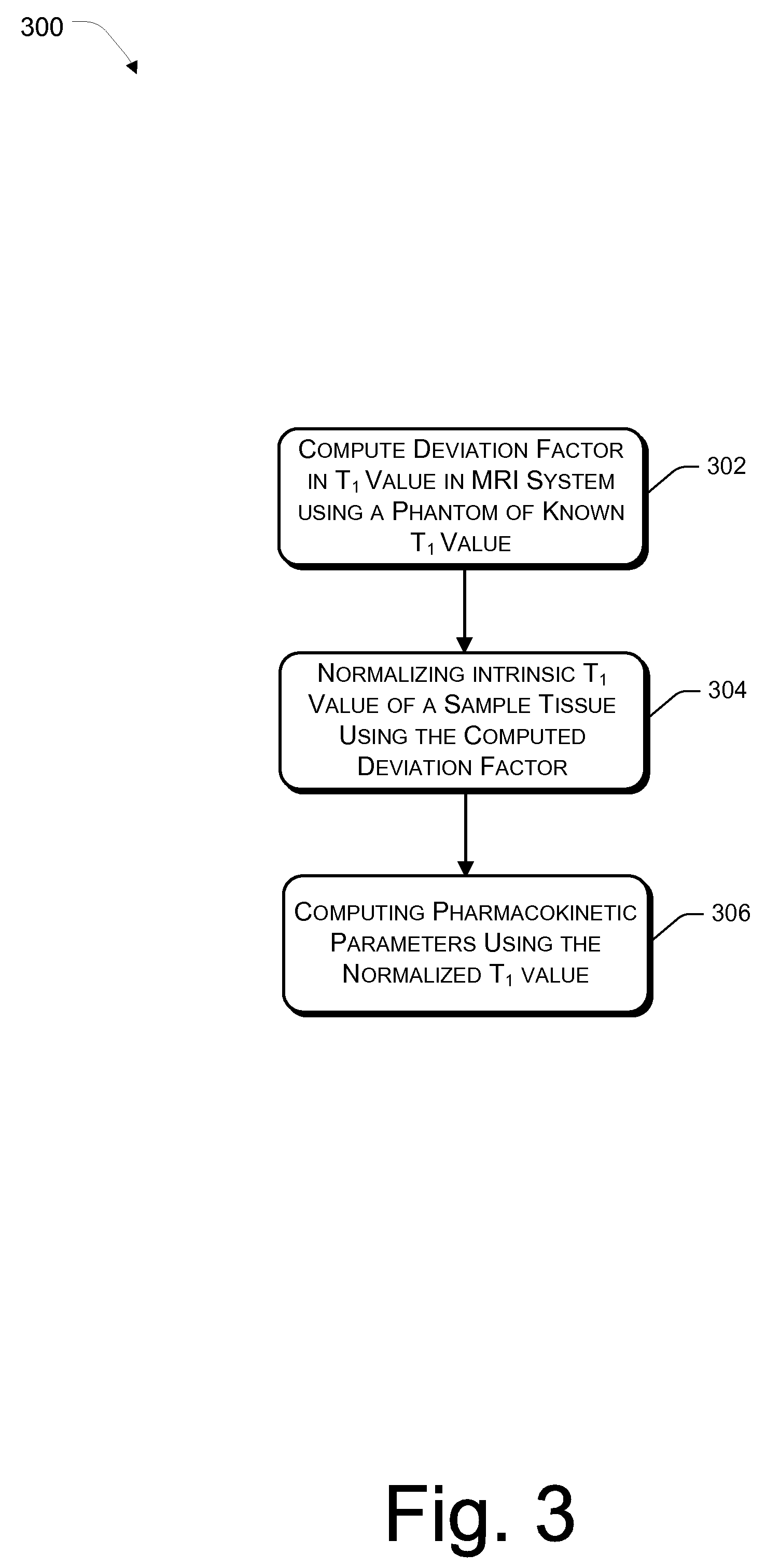Method for computing pharmacokinetic parameters in MRI
a pharmacokinetic parameter and mri technology, applied in the field of enhancing the accuracy of pharmacokinetic parameter computation in the mri system, can solve the problems of insufficient reliability of tissue classification, inability to determine the threshold of normal, benign, and malignant tissues, and insufficiently reliable tissue classification to provide a conclusive diagnosis. , to achieve the effect of improving the visibility of internal body structures
- Summary
- Abstract
- Description
- Claims
- Application Information
AI Technical Summary
Benefits of technology
Problems solved by technology
Method used
Image
Examples
Embodiment Construction
[0028]The present invention relates to an effective dynamic contrast enhanced magnetic resonance imaging (DCE-MRI) of tissues such as breast cancer tissues. The present invention further provides a method of enhancing and improving accuracy of calculated pharmacokinetic parameters such as Ktrans for effective detection and differentiation of malignant, benign and normal tissues.
[0029]In an embodiment, a contrast agent / tracer is injected into the body of the patient and a time sequence of MRI volumes is acquired. Such a time sequence image could be acquired every 2 seconds or 4 seconds, which increases the number of data points being plotted. Use of contrast agents significantly enhances T1-weighted MRI readings. Contrast agents are transported throughout the body by vascular systems (arteries, arterioles, capillaries, veins and other types of vessels), in which process, the contrast diffuses across the vessel walls into the surrounding tissue which comprises tissue cells and extrace...
PUM
 Login to View More
Login to View More Abstract
Description
Claims
Application Information
 Login to View More
Login to View More - R&D
- Intellectual Property
- Life Sciences
- Materials
- Tech Scout
- Unparalleled Data Quality
- Higher Quality Content
- 60% Fewer Hallucinations
Browse by: Latest US Patents, China's latest patents, Technical Efficacy Thesaurus, Application Domain, Technology Topic, Popular Technical Reports.
© 2025 PatSnap. All rights reserved.Legal|Privacy policy|Modern Slavery Act Transparency Statement|Sitemap|About US| Contact US: help@patsnap.com



